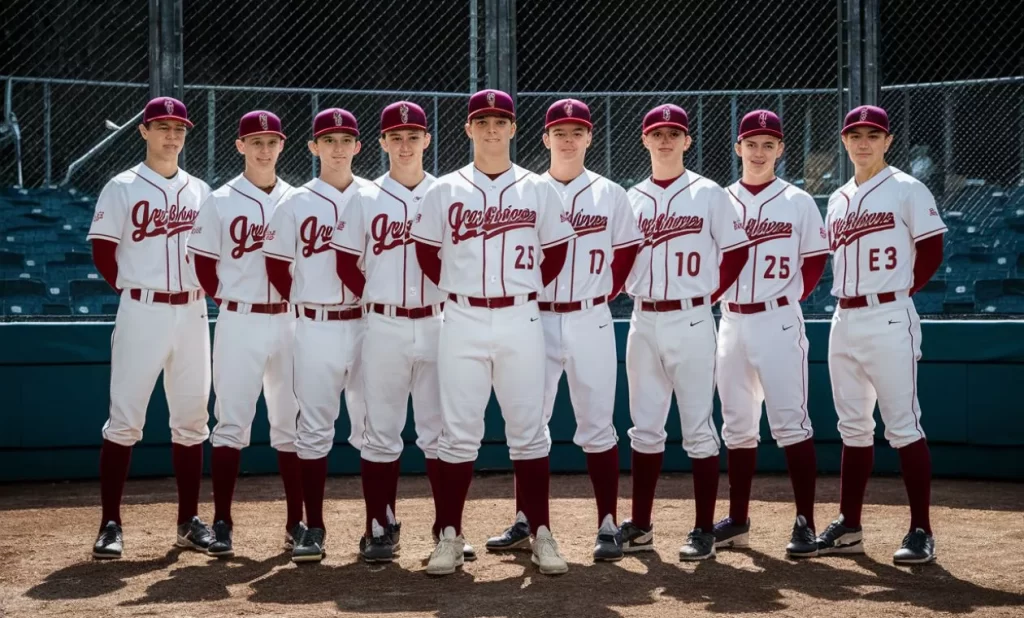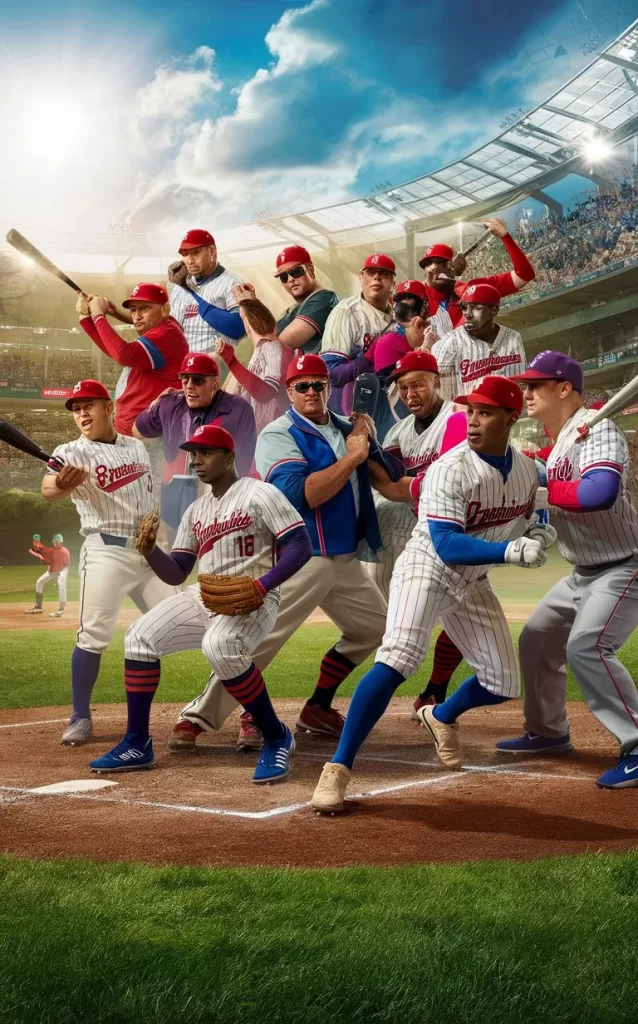
What does MVR mean in baseball? What is the definition of MVR as a baseball term? If you’ve ever wondered about these questions, you’re not alone. Mound visits remaining (MVR) is a concept in Major League Baseball (MLB) that often sparks curiosity and confusion. So, let’s unravel the mystery and discover the significance of MVR in the game.
Key Takeaways:
- Mound visits remaining (MVR) is a counting measure in MLB that represents the number of times a team can visit the pitcher’s mound during a game.
- MVR is not an official baseball statistic but is displayed on the scoreboard to monitor and limit mound visits.
- The purpose of mound visits is to discuss strategy, address mechanical issues, provide emotional support, and deliver instructions to optimize performance.
- MVR has regulations regarding the number of visits allowed per game and consequences for exceeding the limit.
- MVR influences game management, pitcher usage, and the strategic decision-making process in baseball.
Mound Visits and Their Purpose
Mound visits in baseball play a crucial role in the game strategy and communication between players and coaches. When players or members of the coaching staff go to the pitcher’s mound, it signifies a mound visit. These visits serve various purposes, all aimed at optimizing pitching performance and making strategic adjustments.
During a mound visit, the coaching staff may discuss pitching strategy with the pitcher. They can analyze the opposing team’s batting tendencies, identify weaknesses, and develop a plan to exploit them. Additionally, coaches can address mechanical issues, such as correcting the pitcher’s grip, release point, or pitching mechanics. By identifying and rectifying any flaws or inconsistencies, coaches can help the pitcher enhance their performance and make the necessary adjustments.
Mound visits also provide an opportunity to provide emotional support to the pitcher. Baseball can be a mentally demanding sport, and pitchers often face intense pressure and high-stress situations. Coaches and teammates can use mound visits to offer encouragement, provide reassurance, and instill confidence in the pitcher.
Besides discussing pitching strategy and offering emotional support, mound visits can be utilized for other purposes. Coaches can use these visits to give instructions on defensive positioning, ensuring the fielders are in the optimal position to make plays. Mound visits can also be an opportunity to deliver scouting reports on hitters, informing the pitcher of the hitter’s tendencies, weaknesses, and preferred pitches.
Mound visits initiate vital discussions that help teams adjust their game plan, make tactical decisions, and optimize performance. Whether it’s analyzing the opponent’s weaknesses, addressing mechanical issues, or providing emotional support, mound visits serve as a designated meeting place for discussions between the pitcher and the rest of the team. These visits facilitate effective communication, ensuring that everyone is aligned towards the common goal of winning the game.
| Purpose of Mound Visits |
|---|
| Discussing pitching strategy |
| Addressing mechanical issues |
| Providing emotional support |
| Giving instructions on defensive positioning |
| Delivering scouting reports on hitters |
Limits and Enforcement of Mound Visits

In Major League Baseball (MLB), there are specific limits and regulations in place regarding mound visits. The mound visit limit is set at five per nine-inning game, with additional visits granted for extra innings. Exceeding the allotted number of mound visits carries consequences that can vary depending on the situation.
If a team surpasses the mound visit limit, the manager or coach is required to make a pitching change immediately. This ensures that the game continues without excessive interruptions or delays. The enforcement of this rule aims to maintain the pace of play and prevent teams from abusing the mound visit system.
“If you exceed the mound visit limit, you must make a pitching change. That’s just the way it is,” says MLB Commissioner Rob Manfred.
Consequences of exceeding the mound visit limit can also have implications for the pitching change. For instance, if a pitching change occurs during a substitute pitcher’s first batter, the substitute can only continue pitching for the remainder of that at-bat.
In some cases, a violation of the mound visit rule may result in ejection of the manager or coach from the game, further emphasizing the importance of adhering to the regulations.
The umpire plays a crucial role in enforcing the mound visit limit. They are responsible for keeping track of the number of mound visits and communicating the remaining visits to both teams and the press box.
| Potential Consequences of Exceeding Mound Visit Limit | |
|---|---|
| Ejection of manager or coach | Depends on the violation severity |
| Immediate pitching change | When the mound visit limit is exceeded |
| Substitute pitcher’s restricted innings | When a pitching change occurs during their first batter |
The enforcement of the mound visit rule ensures fair play and maintains the integrity of the game. It also adds an element of strategy and decision-making for managers and coaches, who must consider their mound visits carefully.
MVR and its Impact on the Game


Mound visits remaining (MVR) have a significant impact on baseball strategies and game management. The limited number of mound visits forces teams to be strategic and deliberate in their use of visits. Managers and coaches must carefully consider when to use a mound visit, as they are valuable resources that can significantly impact the outcome of the game.
Mound visits play a crucial role in the strategic decision-making process and can influence the dynamics of the game. They are essential for communication between the pitcher and the rest of the team, allowing for adjustments in pitching strategy and addressing any mechanical issues. These visits also serve as a means of emotional support for the pitcher and an opportunity to deliver important instructions on defensive positioning or scouting reports on hitters.
Furthermore, MVR affects pitcher usage, as teams must take into account the number of remaining visits when deciding whether to make a pitching change. It requires pitchers and catchers to be prepared to communicate effectively within the allotted visits to ensure proper game management and prevent miscommunications.
MVR, therefore, plays a vital role in game management and increases the need for effective communication and decision-making on the field. It adds an element of strategy and anticipation as teams navigate the limited resources of mound visits and make crucial adjustments to optimize performance.
| Impact of MVR on Baseball Strategies | MVR’s Effect on Pitcher Usage | Role of MVR in Game Management |
|---|---|---|
| Mound visits require strategic decision-making and careful consideration to optimize performance. | Teams must take into account the number of remaining visits when deciding whether to make a pitching change. | MVR ensures effective communication and prevents miscommunications, contributing to proper game management. |
| Mound visits allow for adjustments in pitching strategy and addressing mechanical issues. | Pitchers and catchers must be prepared to make the best use of the limited visits. | MVR adds an element of strategy and anticipation to the game. |
Conclusion
Mound visits remaining (MVR) play a critical role in the game of baseball, allowing teams to strategize and optimize their performance on the pitcher’s mound. The limited number of mound visits ensures that the pace and flow of the game are maintained, avoiding excessive interruptions and delays. MVR forces teams to make strategic decisions on when to use a mound visit, whether it’s to discuss pitching strategy, address mechanical issues, or provide emotional support. These visits serve as a vital tool for game management and player communication, contributing to the overall success of the team.
Understanding MVR and its importance can enhance fans’ appreciation for the strategic intricacies of the game. It highlights the significance of effective communication and decision-making on the field. Mound visits offer a valuable opportunity for teams to adjust their approach, reevaluate tactics, and make crucial decisions that can ultimately influence the outcome of the game. The role of these visits goes beyond mere discussions; they shape the game strategy and contribute to the overall excitement and competitiveness of baseball.
In conclusion, MVR in baseball is more than just a counting measure of mound visits. It underscores the integral role of mound visits in game strategy, promoting effective communication, and optimizing player performance on the pitcher’s mound. As fans, understanding the significance of MVR allows us to delve deeper into the strategic side of the game, appreciating the tactical decision-making and teamwork involved. So next time you watch a baseball game, pay close attention to the mound visits, as they are an essential element of the game’s dynamic nature and the pursuit of victory.
Recommended
- WHY ARE BASEBALL BATS SO EXPENSIVE? UNRAVELING COST
- REGRIP BASEBALL BAT: EASY STEPS FOR BETTER PERFORMANCE

Meet Daniel Anderson, the heart and soul behind Baseball Pro Picks. At 49, Daniel’s life has revolved around baseball, a passion that’s as strong today as it was when he first fell in love with the game. Living in the USA, Daniel has dedicated countless hours to watching, analyzing, and understanding every pitch, hit, and home run, making almost no game missed. His deep-rooted love for the sport is matched only by his commitment to sharing insightful, expert analysis with fellow baseball enthusiasts. With decades of experience and a keen eye for the game’s nuances, Daniel brings a unique perspective that enriches Baseball Pro Picks. Trust Daniel to guide you through the intricacies of baseball with the authority and trustworthiness of a true aficionado.


